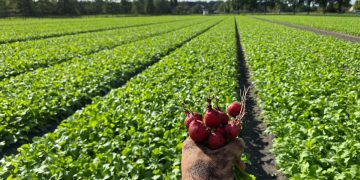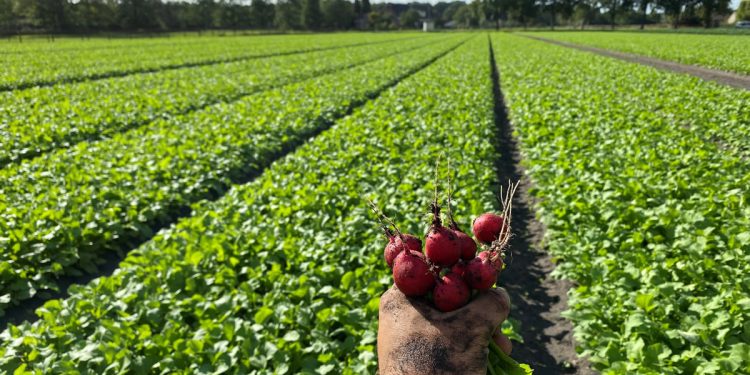Outdoor Radish Cultivation: Challenges and Triumphs in the Netherlands
Radishes are a familiar sight in Dutch greenhouses, but outdoor cultivation of this crop is becoming increasingly noteworthy. While greenhouse radishes are the norm, De Rond Agro, led by Rob de Rond, has embraced the challenge of growing radishes in open fields. This shift, prompted by customer demand and the desire for higher quality produce, is now in its fourth growing season, showcasing both the difficulties and rewards of this unconventional approach.
Embracing the Challenge
Rob de Rond’s venture into outdoor radish cultivation began in 2020, driven by a customer request to explore alternatives to greenhouse-grown radishes. The client had observed a decline in internal quality of greenhouse radishes during peak summer months and sought locally grown options. This request presented a unique opportunity for De Rond Agro to innovate.
Radish cultivation in open fields presents significant challenges. Unlike greenhouse environments where climate conditions are meticulously controlled, outdoor cultivation relies heavily on nature. Sowing radishes requires precision in depth and spacing, as any deviation can compromise the entire crop. Additionally, outdoor growers must contend with unpredictable weather conditions, including rainfall, which can adversely affect seedling quality and crop health.
Managing Outdoor Cultivation
The transition from greenhouse to open-field cultivation requires careful management of several factors. Rob highlights the importance of choosing higher sandy soils to facilitate better drainage and harvesting conditions. Despite these efforts, this year’s excessive rainfall posed considerable difficulties, leading to losses in seedling quality.
Insect pests and fungi also represent major challenges. While greenhouse environments allow for more controlled pest management, outdoor growers must adopt sustainable and preventive measures. Once pests or diseases establish themselves, remedial actions are limited, making vigilance and early intervention critical.
Experience and Learning
Rob de Rond acknowledges the steep learning curve associated with outdoor radish cultivation. Each season presents new lessons, as exemplified by this year’s weather-related challenges. The cultivation process starts in early spring with the aim of maximizing both the start and end of the harvesting period. Quality remains the top priority, as De Rond Agro strives to produce radishes that meet high standards.
Despite the inherent risks, Rob remains optimistic about the future of outdoor radish cultivation. He notes that while many countries have shifted to producing forest radishes due to rising labor costs, there is still a market for high-quality, loose radishes. This evolving market dynamic could influence the future of radish cultivation practices.
Conclusion
Outdoor radish cultivation in the Netherlands presents a unique set of challenges but also offers opportunities for those willing to embrace the complexity. De Rond Agro’s experience underscores the importance of precision, quality control, and adaptability in achieving success. As the demand for high-quality radishes continues, innovative approaches like outdoor cultivation may play a significant role in meeting market needs.
































